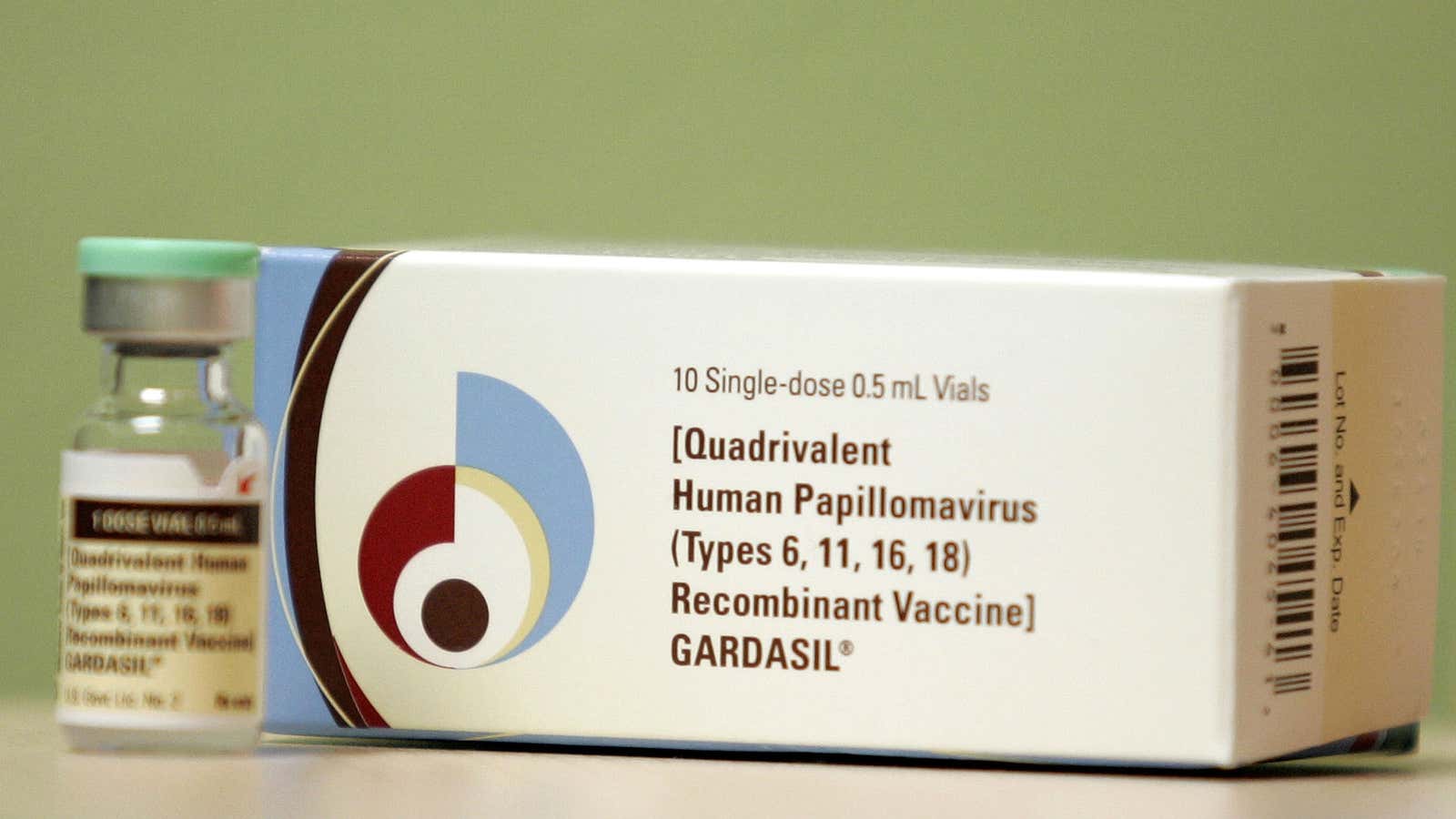The most common sexually transmitted infection is becoming even more widespread in part thanks to the rise in popularity of oral sex.
From 2011 to 2014, the number of men with an oral HPV infection rose from one in 13 US men in 2012 to to one in nine, or about 11 million in total, in 2014. Roughly 7.3% of these cases were “high-risk” strains that have been known to lead to cancer.
The data come from the National Health and Nutrition Examination Survey (NHNES), conducted annually by the US Centers for Disease Control. Each year’s survey comprises responses from about 5,000 adults to questions about their health, including sexual behaviors, and involves a physical exam to test for infections like HPV. Researchers recently analyzed these surveys from 2011 through 2014 to track rates of oral HPV specifically, and published (paywall) their work in the Annals of Internal Medicine on Oct. 16.
The study found that men’s risk for oral HPV increased for those who reported having more oral-sex partners. Men who had oral sex with up to two partners over the course of their lives were 2.5% more likely to have oral HPV, and men who had more than 16 oral sex partners were almost 21% more likely to have the virus.
There are some 200 strains of the virus, and most—including the ones that can lead to cancer—never cause symptoms. The body can often shake off an HPV infection on its own; if someone tests positive for HPV at one point in time, three months later they may not have the infection.
That said, oral HPV can cause oropharyngeal cancer, which shows up in the throat, tongue, gums, or salivary glands. The CDC estimates that more than 16,000 cases of oropharyngeal cancer are newly diagnosed each year, roughly 13,000 cases of which are in men—and, according to the US National Cancer Institute, rates of the cancer are increasing by about 2.5% each year (paywall) in the country.
This is partly because “rates of HPV vaccination are low in the US,” says Ashish Deshmukh, a public health epidemiologist at the University of Florida and lead author of the paper. Even though the HPV vaccine, called Gardasil, protects against the high-risk strains of HPV, a recent analysis shows (paywall) that 38% of girls and only 14% of boys complete the vaccination schedule. There are also no tests to show precancerous lesions for throat cancer, which means it’s hard to predict who will develop cancer from oral HPV and who will not.
The good news is, throat cancer is highly treatable. “Overall treatment-related cure rates are upwards of 90%,” says Eric Moore, a head and neck surgeon at the Mayo Clinic in Rochester, Minnesota—meaning that five years after treatment, 90% of patients are cancer-free. Still, Moore advises that everyone should be vaccinated for HPV. And of course, to practice safe sex with new partners, which means using a condom for oral sex.
